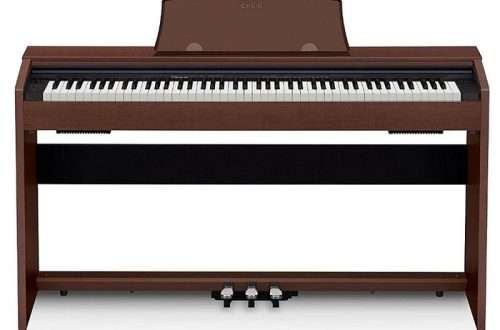Musical culture of classicism: aesthetic issues, Viennese musical classics, main genres
Contents
In music, like in no other art form, the concept of “classic” has an ambiguous content. Everything is relative, and any yesterday’s hits that have stood the test of time – be they masterpieces by Bach, Mozart, Chopin, Prokofiev or, say, The Beatles – can be classified as classical works.
May lovers of ancient music forgive me for the frivolous word “hit,” but great composers once wrote popular music for their contemporaries, without aiming at eternity.
What’s all this for? To the one, that It is important to separate the broad concept of classical music and classicism as a direction in musical art.
The era of classicism
Classicism, which replaced the Renaissance through several stages, took shape in France at the end of the 17th century, reflecting in its art partly the serious rise of the absolute monarchy, partly the change in worldview from religious to secular.
In the 18th century, a new round of development of social consciousness began – the Age of Enlightenment began. The pomp and grandeur of Baroque, the immediate predecessor of classicism, was replaced by a style based on simplicity and naturalness.
Aesthetic principles of classicism
The art of classicism is based on -. The name “classicism” is associated in origin with the word from the Latin language – classicus, which means “exemplary”. The ideal model for artists of this trend was ancient aesthetics with its harmonious logic and harmony. In classicism, reason prevails over feelings, individualism is not welcomed, and in any phenomenon, general, typological features acquire paramount importance. Each work of art must be built according to strict canons. The requirement of the era of classicism is the balance of proportions, excluding everything superfluous and secondary.
Classicism is characterized by a strict division into. “High” works are works that refer to ancient and religious subjects, written in solemn language (tragedy, hymn, ode). And “low” genres are those works that are presented in vernacular language and reflect folk life (fable, comedy). Mixing genres was unacceptable.
Classicism in music – Viennese classics
The development of a new musical culture in the middle of the 18th century gave rise to the emergence of many private salons, musical societies and orchestras, and the holding of open concerts and opera performances.
The capital of the music world in those days was Vienna. Joseph Haydn, Wolfgang Amadeus Mozart and Ludwig van Beethoven are three great names who went down in history as Viennese classics.
Composers of the Viennese school masterfully mastered a variety of genres of music – from everyday songs to symphonies. The high style of music, in which rich figurative content is embodied in a simple but perfect artistic form, is the main feature of the work of the Viennese classics.
The musical culture of classicism, like literature, as well as fine art, glorifies the actions of man, his emotions and feelings, over which reason reigns. Creative artists in their works are characterized by logical thinking, harmony and clarity of form. The simplicity and ease of the statements of classical composers might seem banal to the modern ear (in some cases, of course), if their music were not so brilliant.
Each of the Viennese classics had a bright, unique personality. Haydn and Beethoven gravitated more towards instrumental music – sonatas, concertos and symphonies. Mozart was universal in everything – he created with ease in any genre. He had a huge influence on the development of opera, creating and improving its various types – from opera buffa to musical drama.
In terms of composers’ preferences for certain figurative spheres, Haydn is more typical of objective folk-genre sketches, pastoralism, gallantry; Beethoven is close to heroism and drama, as well as philosophy, and, of course, nature, and to a small extent, refined lyricism. Mozart covered, perhaps, all existing figurative spheres.
Genres of musical classicism
The musical culture of classicism is associated with the creation of many genres of instrumental music – such as sonata, symphony, concert. A multi-part sonata-symphonic form (a 4-part cycle) was formed, which is still the basis of many instrumental works.
In the era of classicism, the main types of chamber ensembles emerged – trios and string quartets. The system of forms developed by the Viennese school is still relevant today – modern “bells and whistles” are layered on it as a basis.
Let us briefly dwell on the innovations characteristic of classicism.
Sonata form
The sonata genre existed at the beginning of the 17th century, but the sonata form was finally formed in the works of Haydn and Mozart, and Beethoven brought it to perfection and even began to break the strict canons of the genre.
The classical sonata form is based on the opposition of two themes (often contrasting, sometimes conflicting) – the main and secondary – and their development.
The sonata form includes 3 main sections:
- first section – (conducting the main topics),
- second – (development and comparison of topics)
- and the third – (a modified repetition of the exposition, in which there is usually a tonal convergence of previously opposed themes).
As a rule, the first, fast parts of a sonata or symphonic cycle were written in sonata form, which is why the name sonata allegro was assigned to them.
Sonata-symphonic cycle
In terms of structure and the logic of the sequence of parts, symphonies and sonatas are very similar, hence the common name for their integral musical form – the sonata-symphonic cycle.
A classical symphony almost always consists of 4 movements:
- I – fast active part in its traditional sonata allegro form;
- II – slow movement (its form, as a rule, is not strictly regulated – variations are possible here, and three-part complex or simple forms, and rondo sonatas, and slow sonata form);
- III – minuet (sometimes scherzo), the so-called genre movement – almost always complex three-part in form;
- IV is the final and final fast movement, for which the sonata form was also often chosen, sometimes the rondo or rondo sonata form.
Concert
The name of the concert as a genre comes from the Latin word concertare – “competition”. This is a piece for orchestra and solo instrument. The instrumental concerto, created in the Renaissance and which received a simply grandiose development in the musical culture of the Baroque, acquired a sonata-symphonic form in the work of the Viennese classics.
String Quartet
The composition of a string quartet usually includes two violins, a viola and a cello. The form of the quartet, similar to the sonata-symphonic cycle, was already determined by Haydn. Mozart and Beethoven also made great contributions and paved the way for the further development of this genre.
The musical culture of classicism became a kind of “cradle” for the string quartet; in subsequent times and to this day, composers do not stop writing more and more new works in the concert genre – this type of work has become so in demand.
The music of classicism amazingly combines external simplicity and clarity with deep internal content, which is not alien to strong feelings and drama. Classicism, in addition, is the style of a certain historical era, and this style is not forgotten, but has serious connections with the music of our time (neoclassicism, polystylistics).



